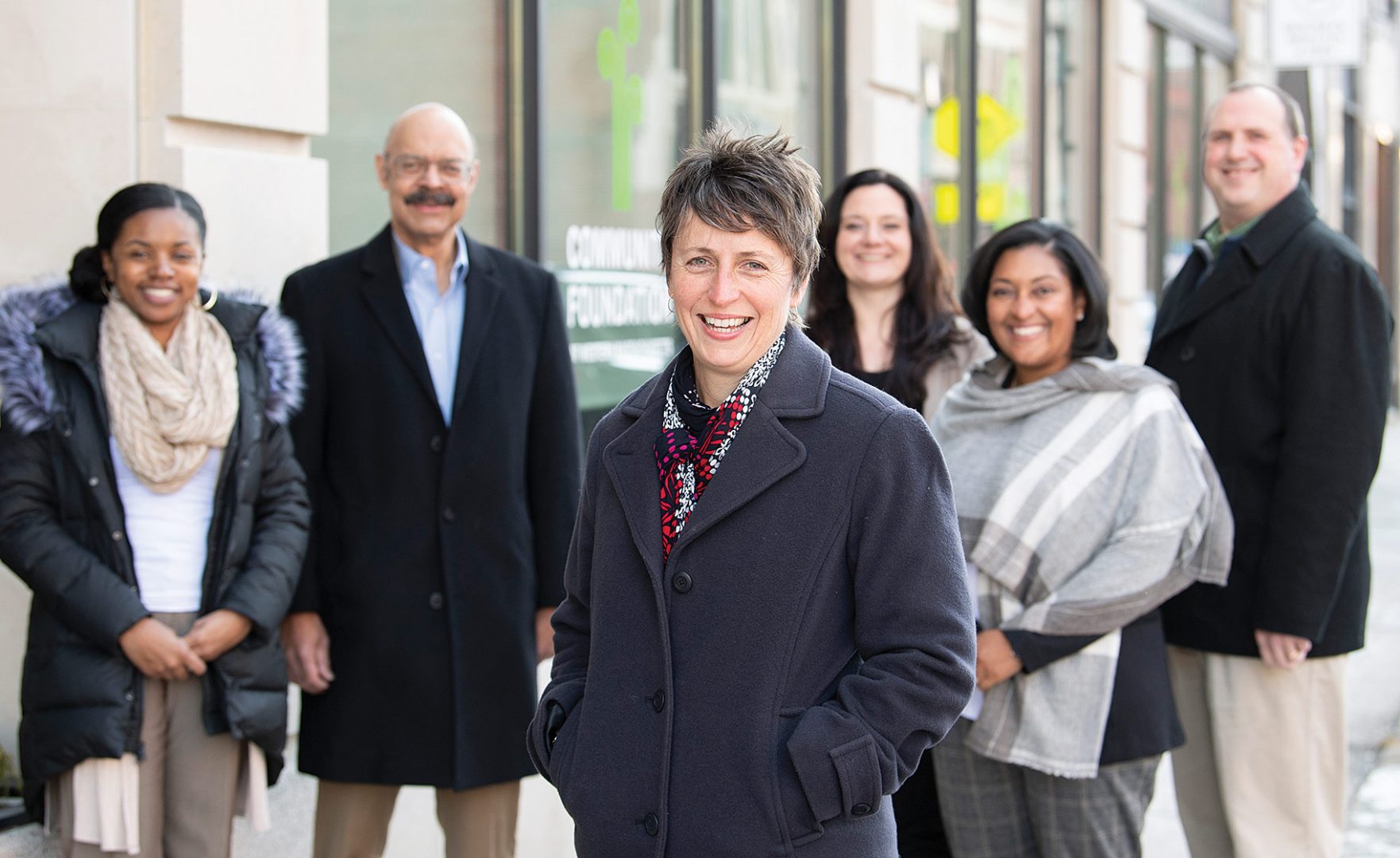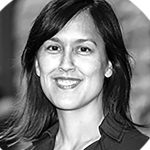The Community Foundation of Western Massachusetts
This Organization Has Harnessed the Exponential Power of Working Together

Leah Martin Photography
Convene and connect.
Those are the two words you hear most often when it comes to the mission of the Community Foundation of Western Massachusetts, and how the agency carries it out.
Together, those words explain how and why this organization — one of hundreds of community foundations across the country — does much more than write checks to nonprofits and provide scholarships and interest-free loans to students — although those are certainly parts of what it does.
More crucially, by convening groups, individuals, and institutions from across the 413, and connecting those constituencies as well as donors with resources and opportunities, the Community Foundation is working to identify the issues and challenges confronting the region, and acting as a leader in ongoing work on matters ranging from helping students complete college to helping children get a solid start to their education; from assisting the creative-arts community to helping agencies addressing issues related to diversity, equity, and inclusion.
Katie Allan Zobel
“Our whole mission is to improve quality of life for everyone in the Valley and create opportunity and equity for all members of our community.”
Add another word — partner — and one can understand the full impact of the foundation. It doesn’t merely support nonprofits and students, it partners with them to improve outcomes — and quality of life — on myriad levels to become what its president and CEO, Katie Allan Zobel has called a “catalyst for change.”
“Our whole mission is to improve quality of life for everyone in the Valley and create opportunity and equity for all members of our community,” Zobel said, noting that most of the foundation’s funding comes from individuals, not large entities. They contribute both while they’re alive and in their wills and estate plans because they recognize how this organization’s model of convening and connecting multiplies the impact of their dollars.
“If they want to support an arts organization that’s much beloved by them, they can do that themselves; they don’t need the Community Foundation,” she explained. “But if they want to support reducing poverty in a particular area, well, that’s hard for one person to do on their own; you have to pool resources. And that kind of effort isn’t going to take a year or two; it’s going to take a sustained effort. We provide an option to individuals to do something they can’t do on their own.”
Paul Murphy
“We were able to distribute funds without a formal grant-application process because we had to constantly get the money out the door so we could meet those needs.”
Paul Murphy, chair of the Community Foundation’s board of trustees, noted that the pandemic has not changed the agency’s mission, necessarily, but merely spurred it to pivot, as all businesses and nonprofits have, and look at ways to meet new and emerging needs within the community, including food insecurity, eviction prevention, and mental healthcare.
“The foundation had just completed development of a new strategic plan, and it was all set for adoption by the board of trustees in March of 2020, which was just as the pandemic was hitting,” he recalled. “And part of that strategic plan that we wanted to implement was around leadership, flexibility, and community engagement, and suddenly, even before the plan was officially adopted, we had to put all those things into play because of the pandemic.”
Elaborating, he said the Community Foundation was able to secure what he called “an outpouring of funds” from a variety of sources, and it went about calling nonprofits and elected leaders in the region to identify areas in need. Simultaneously, it streamlined its grant-funding process so it was able to manage applications more quickly — and effectively.
“The foundation brings together philanthropists and helps them understand what the needs are in our community.”
The result was a quadrupling of grant funding over a typical, pre-pandemic year, Zobel said, adding that the team called on partners at organizations like the Women’s Fund and the Davis Foundation and borrowed their program officers to help make decisions, while recruiting volunteers to pitch in as well. “This was a huge collaborative effort. But I’ve always felt the work of the Community Foundation is a total team effort, not just with the staff, but volunteers.”
Once the foundation had the information it needed, Murphy explained, “we were able to distribute funds without a formal grant-application process because we had to constantly get the money out the door so we could meet those needs. That was an example of how the pandemic forced us to pivot, act more quickly, listen more closely to the community, and make sure the needs were met.”
Listening has always been one of the more important qualities at the foundation, said all those we spoke with, and it is just one quality that helps it explain why it has been named a Difference Maker for 2022.
“We’re moving away from being transactional and just handing someone a check.”
Beyond listening, it has acted on what has heard, and in many areas, but especially education and the needs of area students, said Christina Royal, president of Holyoke Community College, a trustee of the foundation, and chair of its education committee. But perhaps its greatest quality, she and others noted, is as a connector.
“That’s a huge piece because there are a lot of organizations and a lot of great work happening in our region, and the foundation acts a connector between donors, students, and nonprofit agencies,” she explained. “The foundation brings together philanthropists and helps them understand what the needs are in our community.”
Denise Hurst, the foundation’s vice president for Community Impact and Partnerships, agreed, saying it’s her job, and the foundation’s mission, to not only write checks, but work to make sure such grants are used in ways that are, in a word, “transformational.”
“We’re engaging with nonprofits and having deep conversations about how the work can be more transformative and impactful,” she explained. “We’re moving away from being transactional and just handing someone a check for money but not necessarily ensuring that they have all the tools and the resources they need to make that money transformational for the region.”
“We came to understand that the majority of arts organizations in our region are quite small, they have really small budgets, a fair amount of turnover … and there was, and is, a real need for capacity support.”
Connecting the Dots
The headlines placed atop recent press releases issued by the agency go a long way toward helping to quantify and qualify its impact within Western Mass. and explain why it is a Difference Maker:
• “Community Foundation Awards $1.3 Million in New Grants for Eviction Prevention, Mental Health, Food Insecurity Programs” (Feb. 11, 2021)
• “Community Foundation Awards $860,000 in New Grants for Immigrant Populations Impacted by COVID-19” (March 5, 2021);
• “Over $818,000 in Grants Distributed by Community Foundation in Latest COVID-19 Response Rounds” (June 22, 2021);
• “Community Foundation Deepens Partnership to Support BIPOC Arts and Creativity Across Massachusetts” (Oct. 20, 2021); and
• “Community Foundation Announces $150,000 Grant to Healing Racism Institute” (June 10, 2021).
Funding for these projects and so many others have increased significantly during the pandemic, Zobel said. “It’s an anomaly, but people have really been incredibly generous. We’ve even received a lot of contributions from outside the community.”
The foundation reported that its FY21 contributions to the community, across all endeavors, totaled $24.6 million and involved 1,668 total donors. That number includes $16.7 million in grants and $1.6 million in scholarships and interest-free loans to 848 students.
Becky Packard
“We’re not just looking at scholarships, but also looking at what kinds of mentoring and supports can help people cross the finish line.”
Beyond these numbers, and those press-release headlines, are copious amounts of convening, connecting, and partnering, said Zobel, adding that, to properly serve the region and responsibly distribute the funds it raises, with an eye on both today and tomorrow, the Community Foundation must do a lot of listening and then acting on what it hears.
This applies to many of the traditional areas of focus for the foundation, especially education, but also some new ones, such as the arts, through creation of the ValleyCreates program, which serves to connect (there’s that word again) the arts and creative communities across Franklin, Hampden, and Hampshire counties.
“We started with a seed, a planning grant from the Barr Foundation, and we did a number of focus groups and surveys and interviews with key stakeholders in the arts sector in our three counties to understand what kind of support they needed, and also how best we can utilize our dollars to support that sector,” said Nicole Bourdon, program officer for ValleyCreates.
Elaborating, she said those research efforts revealed the need for not only grant writing — and the foundation has awarded hundreds of $1,000 grants that are combined with coaching and business-resiliency webinars — but also collaboration, across counties and across disciplines, to build capacity and enable this important sector to speak with a louder, more effective voice.
“We came to understand that the majority of arts organizations in our region are quite small, they have really small budgets, a fair amount of turnover … and there was, and is, a real need for capacity support,” said Bourdon, adding that the foundation continues to monitor and survey the sector to learn what tools it can offer so it can be what she called a “repository for artists and arts organization where they can gather resources and connect and collaborate.”
Zobel said Western Mass. doesn’t have as many large foundations or private philanthropy as the eastern part of the state, so corraling more support from outside Western Mass., such as the Boston-based Barr Foundation, is critical.
“There isn’t a large source of funding for the arts here,” she added. “That was a place the foundation felt we could be useful. We’ve been building that out and supporting not just the arts, but artists, especially artists of color.”
Degrees of Success
In many ways, ValleyCreates illustrates just how the Community Foundation works, said Zobel, adding that it first arms itself with information, then works with various constituencies to develop strategies for addressing region-wide issues and challenges.
Perhaps the best example of this process is the Western Mass Completes program, created with the understanding that it’s not enough to help students enter college — the bigger priority, for them and the region, is to see them to the finish line.
Faced with statistics that the average graduation rate at four-year institutions is 60% — and a staggering 25% at two-year institutions — the foundation commissioned a study and recruited Becky Packard, a trustee and professor of Psychology and Education at Mount Holyoke College, and a leading expert in research on factors that contribute to higher-education persistence, to lead it.
Ten local colleges and universities joined the endeavor, delving into the last eight years of student data on Community Foundation scholarship awardees, gathering information on the resources and systems in place at these schools, and collecting findings from national research and articles.
What became clear is that students often need more time and more resources to complete degrees; many are working full-time while in school and taking a reduced course load, while others are balancing school, work, and family responsibilities. Financial roadblocks create barriers that result in ‘stopping out,’ especially for high-need, first-generation students.
One example, Packard told BusinessWest, is a proliferation of “almost nurses” — nursing students who are close to a degree, “but have to sit out because they can’t afford licensing exams or can’t take the last set of courses because someone in their family lost their job. We’re not just looking at scholarships, but also looking at what kinds of mentoring and supports can help people cross the finish line.”
Royal agreed, noting that the foundation’s work to research the issues related to college completion has been critical in ongoing efforts regarding the direction of scholarships and who would benefit most from the scholarships that are awarded.
“You connect people, they apply, they get a scholarship … but then, what happens to them after?” she asked. “Did it contribute to increased retention or persistence within their educational pursuit? Did they go on to graduate? Being able to look at the impact beyond the scholarship is also really critical. That research contribution is also an important piece.”
Packard said data is still being gathered, and strategies formulated, to boost those graduation rates. She characterized Western Mass Completes as an economic-development issue at a time when companies of all kinds are in dire need of workers with specialized training.
“Usually foundations are charitable organizations and don’t always try to be catalyzers in the region like this, and that’s what I’m excited about.”
In every case — including its annual Valley Gives initiative, which focuses the region’s attention on nonprofits that need support — the foundation is doing this necessary work of convening and catalyzing, in so many critical areas.
“My role is to help convene the nonprofits in the three counties that we serve to help ensure that we are able to help provide them with funding to strengthen organizations that are doing the important work of helping to mitigate food insecurity, to stabilize housing, to provide our residents with opportunities for education, as well as workforce development training,” Hurst explained. “In addition to that, we are really committed to making sure we’re helping these nonprofits thrive and sustain themselves so they can do that important work.”
No Time to Rest
Zobel spends a lot of time thinking about inequity — not only in society, but in the philanthropic landscape of Western Mass.
“This is my life’s work: service to community. So I often see what’s missing and where the gaps are, what we’re not doing,” she told BusinessWest. “I guess it’s my job to keep my eye on who’s not part of this and who needs to be, and how to include others. I’m often thinking that way.”
That’s not to say she’s not gratified by this work. But she’s not satisfied, either, and there’s a difference.
“I’m proud of being a part of something that’s a movement for good, and for improvement and change and equity. I’m really proud of that,” she said. “Yet, I know there’s so much more work to do, so I stay focused on that.”
George O’Brien can be reached at [email protected]







